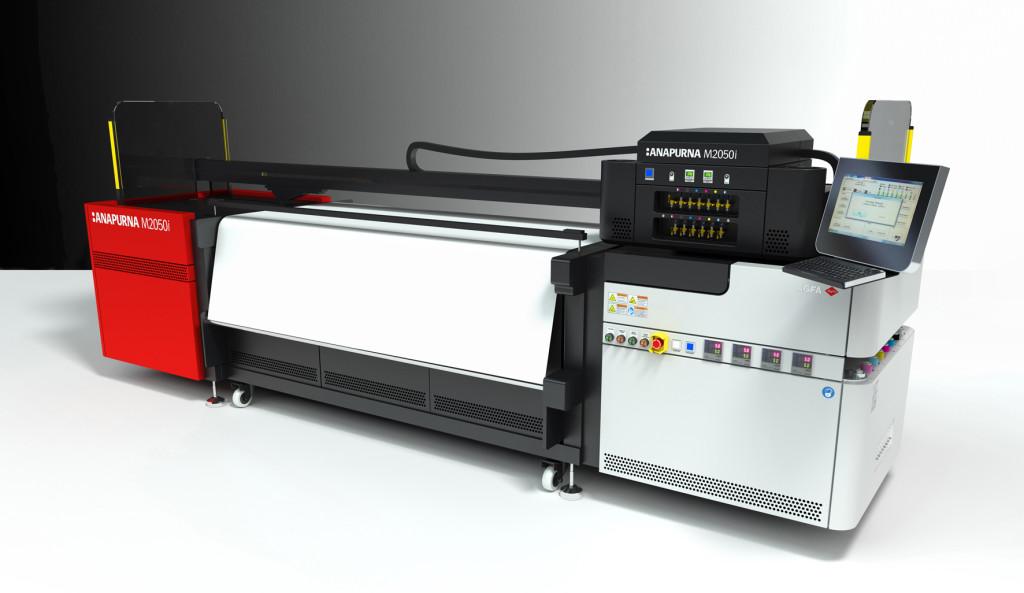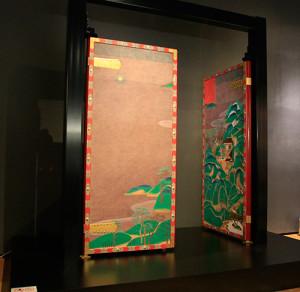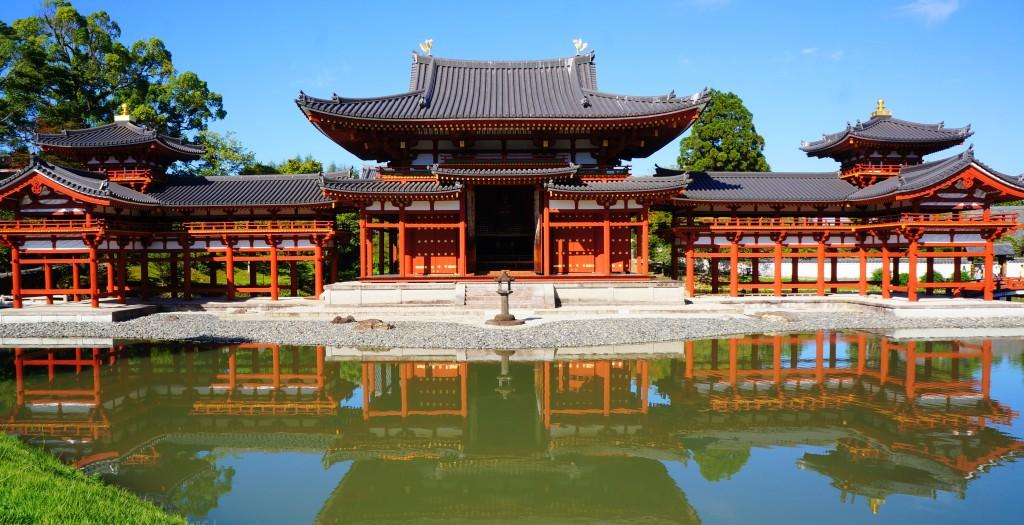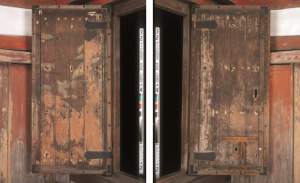As a registered Japanese National Treasure and World Heritage Site, the Buddhist temple near Kyoto called Byōdō-in is one of Japan’s most important historical sites, and even appears on the back of a Japanese coin. Originally constructed back in the year 998 as an exclusive villa, Byōdō-in was purchased and converted into a Buddhist temple in 1052 and the iconic Phoenix Hall was constructed a year later in 1053, which due to a fire in 1336 is the only original building on the site remaining. As you would imagine, despite meticulous upkeep and preservation attempts, after a thousand years the place started to need more help than the priests in residence were capable of providing.
One of the bigger problems was the original west doors, which were at one time beautifully painted and maintained but over the centuries began to warp, fade and chip. The temple’s chief priest Monsho Kamii assembled a team to work on restoring the large wooden door. The team spent ten years painstakingly collecting small trace amounts of the original paint in order to develop a way to simulate the colors and reproduce them using modern technology.
Each of the pair of the original doors is about eight feet tall and four feet wide and both were heavily lacquered to protect the oldest classic Japanese style Yamato-e painting in existence on their inside-facing sides. It was a massive effort for something that seemed so insignificant, but the Byōdō-in is an extremely important holy site, and one very important to the people of Japan. The original doors would be replaced with new ones that needed to be exact recreations in order to maintain the look of the temple.
Once the team assembled by Kamii completed their research he took the project to Agfa Graphics Japan, a worldwide imaging and printing solutions company and asked them if they could help restore the ancient door. Kamii’s team had created a digital image of the door as it should appear, and the hope was that Agfa Graphics could use their UV-inkjet inks to recreate the image. They used their own color matching technology to recreate the colors to be as close to the originals as possible, and then used one of their wide-format Anapurna 2050i inkjet printers to actually print the image onto the four hundred-year-old Japanese cypress wood doors that would be replacing the originals.
It was at this point that the Agfa Graphics team had to get creative with the recreation process. Even regular doors are rarely flat on their own, but the intricately carved doors from the Buddhist temple had curves on the surface that typical 2D printing wouldn’t be able to work with. So an entirely new printing technique was developed that would allow the Anapurna 2050i to print on the curved surfaces of the door frames using a 3D printed tool that allowed the ink to be printed on a 3D surface. They also needed to create an entirely new type of white ink to recreate the original white parts on the door.
“The moment I saw the completed door, I couldn’t withhold my tears. To see them reconstructed had been my dearest wish for 20 years,” said Kamii.
The new doors are on display at the museum of the Byōdō-in Temple for the public to view before they are going to be mounted on the west door, replacing the originals. The reconstructed doors can be viewed until December 6th and visitors to the museum can find detailed explanations of how and why the doors needed to be recreated, including the efforts to print the original image back on them, the investigations into recreating the colors and the modern technologies like inkjet and 3D printing that were used to complete the project.
Discuss this story in the 3D Printed Ancient Doors forum thread on 3DPB.com.
Subscribe to Our Email Newsletter
Stay up-to-date on all the latest news from the 3D printing industry and receive information and offers from third party vendors.
You May Also Like
NSF Awards Kentucky $1M for Advanced Manufacturing
The National Science Foundation has awarded a $1 million grant to the University of Louisville for the Advancing Manufacturing and Building Construction Technologies (NSF AMT) project. This initiative is part...
3D Printing News Briefs, May 11, 2024: 3D Printed Stent, Tower, Sculptures, & More
We’re starting off with medical research in today’s 3D Printing News Briefs, as researchers in Korea used CT images and 3D printing to fabricate an educational simulator for a mastoidectomy....
3D Printing Unpeeled: Wind Turbines, Probiotics and Lenses
TPI Composites, ORNL and Ingersoll Rand are working to make wind turbine tooling segments that can be 18.3 meters long. These elements also include resistive wires that help keep the...
Tethon 3D Releases Cost-effective Bioprinter
Tethon 3D, known for its ceramic-loaded DLP materials, custom resins, and DLP 3D printers, has recently released a bioprinter. Vat polymerization printers like DLP systems have been widely used by...




































